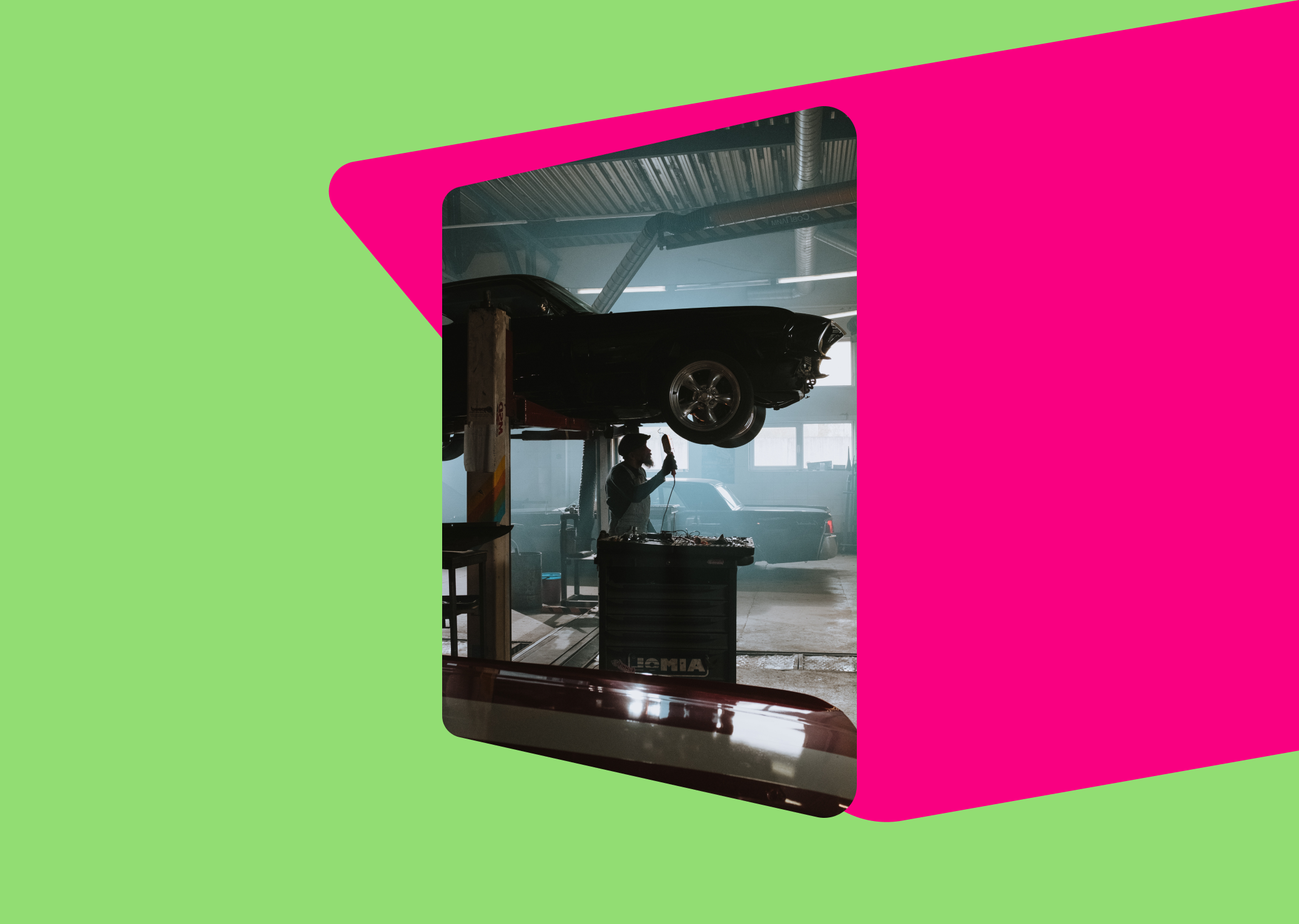- Carmoola
- Blog
- Car Maintenance
- How to Inspect Your Car's Engine Oil
- 🗞 Car Maintenance
- Last updated: Jan 28, 2022
- 5 Min Read
How to Inspect Your Car's Engine Oil
Written by

Verified by


See how much you can borrow in 60 seconds
| Representative Example | |
|---|---|
| Loan amount | £10,000 |
| Interest rate | 13.9% APR |
| 54 payments of | £246 |
| Total cost of credit | £3,284 |
| Option to purchase fee | £1 |
| Total payable | £13,285 |
Every car owner needs to know a thing or two about car maintenance. One of the important skills to learn is how to check your car’s oil.
It’s actually very easy. As soon as you finish reading the steps we’ll share here, you can go ahead and inspect your oil and know what the dipstick is trying to tell you.
How to Retrieve the Dipstick
When retrieving your car's oil dipstick, make sure that the engine isn’t hot. If it’s been running, give it some time to cool down.
Turn Off Engine
Park your car on level ground. Before you check the oil, shut the engine off and wait for a few minutes for the oil to return to its oil pan.
Locate the Dipstick
Now it’s time to open the hood and look for the dipstick on your car’s engine. It’s a metal grip or loop that sticks out of a metal stalk’s end.
This should be easy to find. However, if you are having trouble finding the dipstick, you can refer to your owner’s manual.
Check the Oil Level
Get a rag or paper towel and prepare it in one hand. You may now pull the metal grip or loop to remove the dipstick. Wipe its end with the paper towel or rag, and then return it to the stalk where you pulled it from.
This will give you a more accurate measure of the oil level. After a few seconds, you can now pull the dipstick out to check it.
How to Detect Your Car’s Oil Level
If you’re a new car owner, you might not be familiar with how much oil should be in your car. But by checking the oil level through the dipstick, you’ll have an idea if you’re running low.
When to Add Motor Oil
Now that you have the dipstick out check where the oil ends. You’ll also see that there are markings on the dipstick.
These markings indicate your car's oil level. Sometimes, the car’s dipstick has holes instead of markings. The oil should be able to reach the dipstick’s markings or holes.
If you see that the oil doesn’t reach them, that means your car’s low on oil. So, the next step is to add a quart of oil.
How Much Oil to Add
But what if the dipstick doesn’t show an oil level? That means you have to add oil fast. How much oil you need to add depends on the vehicle’s age, engine type, driving conditions, and total mileage.
With the dipstick, you can detect if your car is consuming oil excessively. For example, if a quart gets used up every 1,000 miles, it’s time to take your car to an auto mechanic. It might be time for an overhaul if one quart gets used up every 500 miles.
Why is my car’s oil level high?
There could be cases when the oil level is too high. It’s possible that the causes for this are condensed water due to combustion, coolant leak, or condensed fuel. All these indicate a bigger problem. The best step is to seek expert help for your car.
Fuel Leakage
Motor oil could also be diluted with fuel due to leakage. This reduces oil viscosity and thin additive concentration. You can tell if this is happening to your vehicle by the odour of the dipstick and the scent of diesel fuel.
Water Leakage
Water that leaks into the oil and engine is harmful to your vehicle. Keep in mind that combustion allows condensation, and this produces water in your engine.
Most of the water is released through the tailpipe. However, with a cool engine, much of the water may condense within the crankcase.
You can tell if there’s water in the car’s oil if you take the dipstick and then drop some oil on a hot exhaust manifold. It has water contamination if you hear crackles or the sound of bacon frying on a hot pan.
Before you attempt this test, know there is some risk of the oil catching fire, so be careful.
How to Tell if the Oil is Aged
Oil doesn’t get better as it gets older. How fast your oil ages depends on the driving conditions, climate, motor oil quality, fuel quality, and engine age.
If you don’t get an oil change regularly, the aged oil will not be able to protect your engine effectively.
You can check the quality of your car’s oil by looking at the dipstick. The oil should be glossy and smooth. It should also look a bit transparent.
If what you’re seeing already has grainy particles, dirt, or sludgy deposits, then it’s definitely time to get an oil change. Good oil should not look very thick or dark or smell like rotten cheese.
How to Check for Coolant Leak
A coolant leak might be present if you notice brown bubbles or residue on the dipstick. Water or antifreeze may have leaked into the car’s engine.
Check the colour of the oil. If it looks a bit like chocolate milk, then that’s also an indicator that there’s a coolant leak.
White exhaust smoke with a sweet odour is another sign of a coolant leak. If this is the case, you may notice that the oil level increasing.
This indicates that a considerable amount of coolant has found its way into the crankcase. If you notice any of these signs of a coolant leak, take your car to an auto repair shop immediately.
Takeaway
Now, you know how to inspect your oil. You can now tell what the oil level is and whether it is aged already just by looking at it and observing its qualities.
Check your motor oil regularly so you can detect any issues with the car early on. By doing so, you can prevent your car from breaking down and taking you by surprise.
You will be able to take it to an auto mechanic for repairs and other maintenance procedures before things get worse.
Check out our other articles on car maintenance for more tips! 😎
See how much you can borrow in 60 seconds
| Representative Example | |
|---|---|
| Loan amount | £10,000 |
| Interest rate | 13.9% APR |
| 54 payments of | £246 |
| Total cost of credit | £3,284 |
| Option to purchase fee | £1 |
| Total payable | £13,285 |
Related articles
What Are the Top 5 Used Car Websites in the UK?
Thanks to the internet, searching for a used car in the UK is easier than ever before. You can simply head online, visit a used...
What Is GMFV in PCP Car Finance? Guaranteed Minimum Future Value Explained
GMFV, or Guaranteed Minimum Future Value, is the amount your lender estimates your car will be worth at the end of your PCP...
Does Financing a Car Build Your Credit?
Financing a car can build credit when you make payments on time, but it can damage your score if you miss payments or take on...

.webp?width=832&height=592&name=customer-support%20(1).webp)










.webp?width=400&height=285&name=online-shoppers-with-dog%20(1).webp)


.jpg?width=500&height=356&name=Vintage%20car%20going%20to%20an%20old%20town-1%20(1).jpg)





